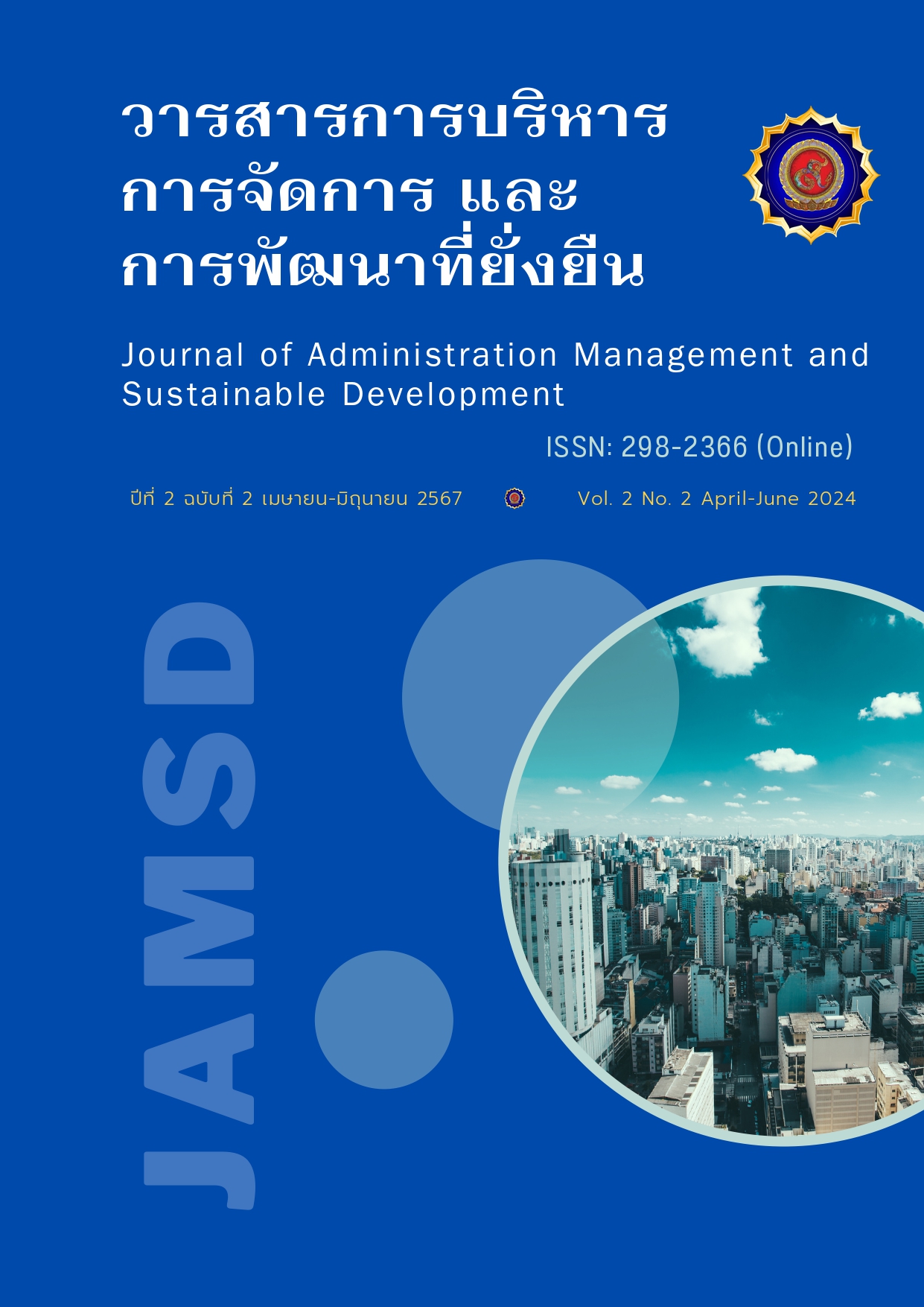Establishing social welfare policies for appropriate self-reliance for the elderly
Keywords:
policy making, social welfare provision, self-reliance, the elderlyAbstract
Thailand is rapidly transitioning into an aging society. Thailand is the first developing country in the world to step into a completely aging society (aged society) because the birth rate of Thai people has a tendency to continuously decrease, with the number of births being only about 600,000 per year, and has moved up to become a society. Hyper-aged society, where the proportion of the population over 65 years old is up to 20 percent or the population over 60 years old is over 30 percent. By 2041, the majority of the elderly will have poor health problems. Have a congenital disease resulting in dependency on others. The government should therefore plan to provide appropriate welfare to the elderly. The best way to deal with this is by establishing policies to promote appropriate self-reliance among the elderly. In the long run, this will help to reduce the cost of welfare and medical care. Support the economy. Encourage the elderly to participate and have social value. Reduce the burden of relying on government welfare, as well as promote people of all ages to live together with understanding in a changing world society. Developing social welfare policies to promote self-reliance among the elderly It requires cooperation from all sectors—government, private sector, and civil society. Let's work together to create a Thai society where the elderly can live happily.
References
กรมการแพทย์. (2549). โครงการวิจัยเรื่อง การสำรวจและศึกษาภาวะสุขภาพของผู้สูงอายุ 4 ภาคของไทย. กรุงเทพฯ: สถาบันเวชศาสตร์ผู้สูงอายุ.
กระทรวงศึกษาธิการ สำนักงานคณะกรรมการวัฒนธรรมแห่งชาติ สำนักงาน สภาสถาบันราชภัฏ. (2545). วัฒนธรรมไทยสู้ภัยเศรษฐกิจ. กรุงเทพฯ: คุรุสภาลาดพร้าว.
กฤษฎา อรุณวงษ์ ณ อยุธยา. (2560). การออกแบบอาคารเพื่อผู้สูงอายุ. วารสารสถาปัตยกรรม, 43(2), 54-61.
กาญจนา แก้วเทพ และกนกศักดิ์ แก้วเทพ. (2530). การพึ่งตนเองศักยภาพในการพัฒนาชนบท. กรุงเทพฯ: รุ่งเรืองสาสน์พิมพ์.
ฐิติรัตน์ จันทร์สว่าง. (2562). การพัฒนาระบบบริการดูแลผู้สูงอายุระยะยาวในประเทศไทย. วารสารบริหารธุรกิจ มหาวิทยาลัยธรรมศาสตร์, 37(2), 153-174.
ไทยพีบีเอส. (2567). Aging Society ไทยเข้าสู่สังคม “แก่เต็มขั้น” สวนทางเด็กเกิดน้อย. สืบค้นจาก https://www.thaipbs.or.th/news/content/335743.
มูลนิธิสถาบันวิจัยและพัฒนาผู้สูงอายุไทย. (2557). สถานการณ์ผู้สูงอายุไทย พ.ศ. 2556. กรุงเทพฯ: บริษัท อมรินทร์ พริ้นติ้งแอนด์พับลิชชิ่ง จำกัด.
วิไลพร ขาวงษ์ และคณะ. (2554). ปัจจัยที่มีความสัมพันธ์กับคุณภาพชีวิตของผู้สูงอายุ. วารสารวิจัยทางวิทยาศาสตร์ สุขภาพ วิทยาลัยพยาบาลบรมราชชนนี จังหวัดนนทบุรี, 22(2), 115-124.
ศูนย์วิจัยกสิกรไทย. (2561). ตลาดผู้สูงวัย โอกาสทอง SME ไทย. กรุงเทพฯ: ศูนย์วิจัยกสิกรไทย.
สัญญา สัญญาวิวัฒน์. (2543). ทฤษฎีสังคมวิทยา: เนื้อหาและแนวการใช้ประโยชน์เบื้องต้น. กรุงเทพฯ: จุฬาลงกรณ์มหาวิทยาลัย.
สำนักงานคณะกรรมการพัฒนาการเศรษฐกิจและสังคมแห่งชาติ. (2563). แผนพัฒนาเศรษฐกิจและสังคมแห่งชาติ ฉบับที่ 13 (พ.ศ. 2566–2570). กรุงเทพฯ: สำนักงานคณะกรรมการพัฒนาการเศรษฐกิจและสังคมแห่งชาติ.
สำนักงานคณะกรรมการพัฒนาเศรษฐกิจและสังคมแห่งชาติ. (2557). แผนพัฒนาเศรษฐกิจและสังคมแห่งชาติ ฉบับที่ 12 (พ.ศ. 2560-2564). กรุงเทพฯ: สำนักงานคณะกรรมการพัฒนาเศรษฐกิจและสังคมแห่งชาติ.
สำนักงานพัฒนานโยบายสุขภาพระหว่างประเทศ กระทรวงสาธารณสุข. (2567). โครงการเชิดชูเกียรติบุคคลและองค์กรต้นแบบด้านการส่งเสริมสุขภาพ ประจำปี 2567. สืบค้นจาก https://doc.anamai.moph.go.th/index.php?r=str-project/view&id=6568.
สุวัฒน์ มหัตนิรันดร์กุล. (2540). เปรียบเทียบแบบวัดคุณภาพชีวิตขององค์การอนามัยโลกทุก 100 ตัวชี้วัด และ 26 ตัวชี้วัด โรงพยาบาลสวนปรุง. เชียงใหม่: จังหวัดเชียงใหม่.
Collin, C. and Kisner, C. (1988). Self-care: A nursing perspective. Reston, VA: Reston Publishing Company.
Mathuranath, P.S. (2005). The Greying of India. Population Ageing in the Context of Asia. New Delhi: Sage Publications.
The WHOQOL Group. (1995). The World Health Organization Quality of Life Assessment (WHOQOL): Position Paper from the World Health Organization. Social Science and Medicine, 41(10), 1403-1409.





